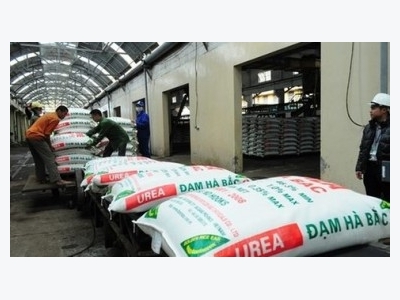Vietnam spends US$338 million on fertilizer imports in Q1

HCMC – Vietnam’s fertilizer imports soared in the first quarter of 2017 after a sharp decrease in 2016, reaching 1.22 million tons worth US$338 million, up 31.5% in volume and nearly 24% in value over the same period last year, said the Ministry of Agriculture and Rural Development (MARD).
Notably, January-March urea fertilizer imports amounted to 231,000 tons, double in volume over the same period last year.
China remained the largest fertilizer exporter to Vietnam, accounting for nearly 42% of Vietnam’s fertilizer import value.
One of the reasons for the sharp rise of fertilizer imports, especially from China, is that the Chinese yuan has recently weakened against the U.S. dollar, making Chinese fertilizer cheaper than domestic one.
In addition, two of the four urea production plants of the Vietnam Chemical Corporation (Vinachem) use coal as their feedstock. As the coal price has risen, production cost has edged higher as a result, leading to higher fertilizer prices and lower competitiveness.
In mid-March, the price of imported fertilizer through Haiphong was recorded at US$237 per ton, 14-18% lower than that of domestic fertilizer.
According to the Ministry of Industry and Trade (MOIT), each year Vietnam needs about 11 million tons of fertilizer and 90% of it is inorganic fertilizer. However, domestic production still does not meet the demand of domestic consumption.
Concerned over the overwhelming majority of imported fertilizer on the domestic market, some local fertilizer producers and traders have requested the Vietnam Competition Authority under MOIT to take safeguard measures against some imported fertilizer products.
The request is in accordance with the WTO’s regulations. However, some enterprises said safeguard measures against fertilizer imports will adversely impact farmers.
Most fertilizer used in Vietnam is for rice cultivation. If the fertilizer price edges up, rice prices would also increase, spelling trouble for rice exporters.
MARD is seeking comment on a draft decree on fertilizer management. According to MARD, the draft decree will attach responsibilities for fertilizer management to local authorities. At present, MOIT manages inorganic fertilizer while MARD is responsible for organic fertilizer management.
Có thể bạn quan tâm
 MARD urges husbandry firms to save pig farms
MARD urges husbandry firms to save pig farms He spoke yesterday at an urgent meeting in Hà Nội with animal husbandry firms seeking measures to rescue the pig-farming industry.
 Vietnamese robusta coffee prices fall to four-month low, trade at standstill
Vietnamese robusta coffee prices fall to four-month low, trade at standstill This slump follows the country's coffee exports in the first half of the 2016/2017 season hitting a three-year high.
 Vegetable exports reach nearly 190 billion vnd per day
Vegetable exports reach nearly 190 billion vnd per day Vegetable exports continue to be an impressive bright spot in the export activities of the first two months of 2017 in Vietnam with a high growth of double